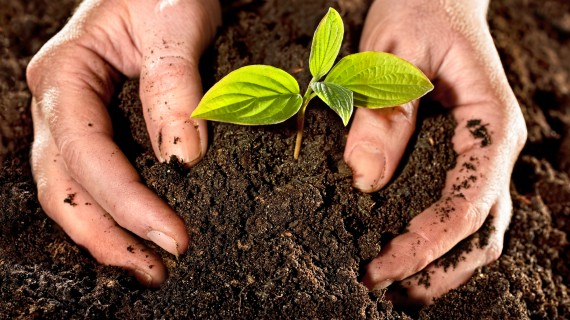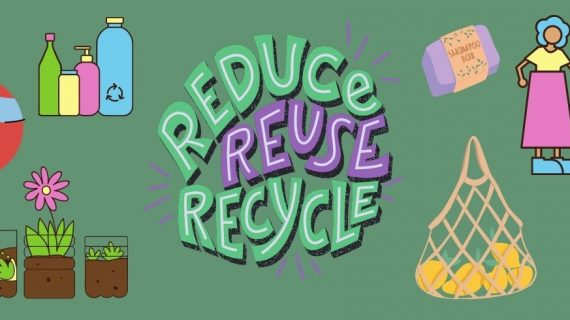In a high-tech region, zero-waste living brings together two worlds that often seem at odds—fast innovation and careful conservation. Technology moves quickly, and new devices appear every year, creating more waste than most cities can handle. Yet, the same innovation that fuels progress can also drive smarter solutions for sustainable living. People and companies in tech-driven areas now look for ways to reduce waste without slowing growth. From advanced recycling systems to creative reuse projects, each small action matters. Zero-waste living in a high-tech region shows that progress and responsibility can share the same space.
High-Tech Growth and Everyday Waste Challenges
Fast innovation fills cities with gadgets, packaging, and new materials every day. Constant upgrades lead to piles of outdated devices and endless deliveries. Many regions now face the problem of balancing convenience with care for the environment. People search for smart ways to reduce waste while enjoying progress. Choosing energy-saving devices and eco-friendly furniture for your modern living space can start the change at home. Recycling systems, refill stations, and repair cafés bring practical options to urban life. Each smart choice reduces waste and keeps technology and sustainability growing side by side.

Modern Principles for Smarter Waste Reduction
Everyday habits shape the future of waste management in cities filled with technology. Reducing waste begins with smarter product choices and thoughtful consumption. Many companies now design devices that last longer and use fewer materials. Recycling grows stronger when users return products for reuse or repair. Producers take greater responsibility for how goods end their life cycle. Circular systems help turn old resources into new materials. These modern principles drive sustainable growth in high-tech areas. With steady effort, innovation can protect both progress and the planet at the same time.
Hotels and eco-lodges embracing circular design principles are cutting waste by reusing materials, integrating smart sensors to monitor energy use, and collaborating with local artisans for upcycled décor. These examples show that technology can enhance, rather than harm, our connection to the environment.
Smart Systems and Circular Design for Urban Waste
Technology reshapes how modern cities handle waste. Smart bins and data-driven systems track disposal patterns and improve collection efficiency. Sensors report fill levels, and routes adjust to reduce fuel use. Real-time data helps limit overflow and keeps streets cleaner. At the same time, electronic waste calls for stronger circular design ideas. Devices need simple repair options and recyclable parts. Manufacturers now recover valuable materials instead of discarding them. Practical strategies include:
- Using modular parts for easier repairs.
- Returning outdated gadgets to certified recycling centers.
- Reusing components in new products.
- Designing packaging from fully recyclable materials.
- Offering trade-in rewards for used electronics.
Each innovation builds a tighter loop between consumption and conservation. Smart systems and circular thinking together keep cities efficient, sustainable, and cleaner.
Cities like Amsterdam and Ljubljana already use smart waste systems and open-data recycling platforms, inspiring communities and travelers to adopt zero-waste practices during their stay.
Innovative Materials and Cleaner Production Methods
New materials now support cleaner production and lower waste. Scientists develop biodegradable plastics, smart textiles, and eco-friendly composites for modern use. Factories adopt renewable energy and reuse byproducts from manufacturing. Research teams explore ways to turn food or plant waste into valuable goods. Digital tools track supply chains and help reduce excess production. Local startups design packaging that dissolves or composts without harm. Each breakthrough adds strength to the idea of circular production. Innovation no longer means more pollution. It shows how progress and responsibility can grow together through sustainable material choices and smarter industrial design.
Continuous research drives better efficiency in manufacturing and construction. Designers choose non-toxic pigments and recycled metals for everyday products. Renewable materials now replace harmful synthetics in electronics and textiles. Step by step, innovation shapes industries that respect the planet while meeting modern needs with creativity, balance, and long-term awareness.

Policies and Habits That Shape Responsible Living
Rules and incentives guide people toward cleaner lifestyles in modern cities. Governments introduce recycling goals and support green innovation programs. Local laws reward companies that cut emissions and reuse materials. Cities also promote sustainable travel through better bike paths, electric buses, and shared mobility options. These changes reduce waste and pollution while keeping movement efficient. Public campaigns teach how to separate trash and use products longer. Schools add environmental lessons that inspire lasting habits. Each new rule and habit connects technology with care for natural resources, creating cities that grow smarter and cleaner every year.
Zero-Waste Living in a High-Tech Region: Learning, Adapting, and Measuring Real Progress
Education and cooperation help cities move toward zero waste. People learn new ways to handle resources with care. Local programs encourage sharing, composting, and creative reuse. Businesses and residents exchange ideas to improve daily habits. Real progress grows when actions connect across sectors. Useful steps include:
- Hosting repair fairs for household items.
- Creating apps to report recycling issues quickly.
- Supporting startups that turn waste into new products.
- Tracking waste reduction with digital dashboards.
- Publishing clear data on recycling and reuse rates.
Smart metrics guide decisions and highlight real improvement. Consistent review keeps cities accountable and efficient. Every tracked result builds trust and strengthens the goal of lasting sustainability.
Technology and the Future of Green Innovation
New technology continues to open paths toward cleaner living. Artificial intelligence improves recycling plants and predicts waste patterns in cities. Robots sort materials faster and more safely than human workers. Travelers also benefit from smarter options that cut emissions. Simple tips for eco-friendly travel now include booking greener stays, using public transport, and avoiding single-use plastics. Electric planes and renewable-powered trains move closer to daily use. Companies design products that fully return to the production cycle. The next stage of innovation connects comfort, speed, and responsibility, shaping a future where growth supports the planet, not harms it.

Building a Smarter, Cleaner Future
Zero-waste living in a high-tech region proves that technology can serve both comfort and care for the planet. Modern tools make it easier to track waste, reuse materials, and rethink what sustainability means in daily life. When cities, companies, and individuals use innovation with purpose, they create systems that give resources new life instead of discarding them. True progress happens when every invention supports a cleaner tomorrow. Overall, this approach in a high-tech region shows that the path to a sustainable future begins with smart choices made today.
Whether at home or while traveling, choosing zero-waste practices means joining a global movement where innovation meets empathy for the Earth. Platforms like Ecobnb remind us that every small, smart choice—whether booking an eco-stay or refusing a plastic item—helps build a cleaner, fairer, and more connected world.
Cover image: photo via Canva PRO

Author bio: Jordan Ellis is a logistics specialist at Upline Moving, a company that provides professional moving services designed to make relocations smooth, organized, and stress-free. He focuses on the connection between efficient logistics, modern living, and sustainable resource management. Through his writing, Jordan explores how innovation and practical planning can simplify transitions and improve daily life in fast-paced, tech-driven environments.




